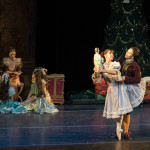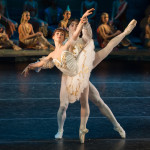Cracking Nuts: Fun Facts about, “The Nutcracker,” Ballet
It’s that time of year (when the world falls in love) and when the Gelsey Kirkland Ballet takes over the Schimmel stage to present their production of that perennial favorite ballet, The Nutcracker. To celebrate the ballet’s return, I thought I would present some trivia about the time honored classic!
Based on Dark Material
The famous ballet is based on the fairy tale, “The Nutcracker and the Mouse King” by German author E.T.A Hoffman. The original tale includes a back story for the prince who was cursed when helping a spoiled princess named, “Pirlipat,”who had been turned into a nutcracker by the queen of the mice. The ballet’s libretto follows the French adaptation of the tale which was penned by Alexandre Dumas père. The French story leaves out the sinister back story. While The Gelsey Kirkland production also leaves out the “Pirlipat plot line,” it retains a lot of the dark undertones from the original story.
Double Billing
The original production was staged by famed choreographer Marius Petipa on December 18, 1892 in St. Petersburg, Russia at the Mariinsky Theatre. The ballet had to be double billed along with an opera which was also composed by Tchaikovsky called, Iolanta. The Gelsey Kirkland version uses the original Petipa choreography for their Grand Pas De Deux in Act 2.
Inferior Feelings
Tchaikovsky considered his score for The Nutcracker to be inferior to other works such as Sleeping Beauty (1890). Perhaps it is ironic that The Nutcracker is his most famous and iconic score becoming synonymous with Christmas. The Gelsey Kirkland version will be danced to the original Tchaikovsky score which is quite beautiful.
Suite Success
Ironically, the original production was a huge critical flop. Despite this, Tchaikovsky’s Nutcracker Suite was a huge commercial success and sold many copies of sheet music.
Celestial Overtones
One of the more famous songs featured in The Nutcracker Suite is titled “The Dance of the Sugar Plum Fairy.” The arrangement features an unusual instrument called a celesta. The celesta is similar to a piano except it contains metal plates instead of strings. The celesta adds to the ethereal sound of the piece. Tchaikovsky had discovered the instrument when on holiday in Paris. In the Gelsey Kirkland version of the ballet, Marie dances, “The Dance of the Sugar Plum Fairy,” herself to convey her journey into adulthood.
“I left my Nutcracker in San Fransico”
The Nutcracker’s full length production first appeared in the United States in 1944, by the San Francisco Opera Ballet under the direction of William Christensen. Today, The Nutcracker enjoys more success in the U.S. than any other country around the world.
See You at the Schimmel
Michael Scott-Torbet
Blogger
Gelsey Kirkland Ballet: “The Nutcracker”; December 11 – December 21; $59 | $49 | $39; all our box office at (212) 346-1715 or visit https://



